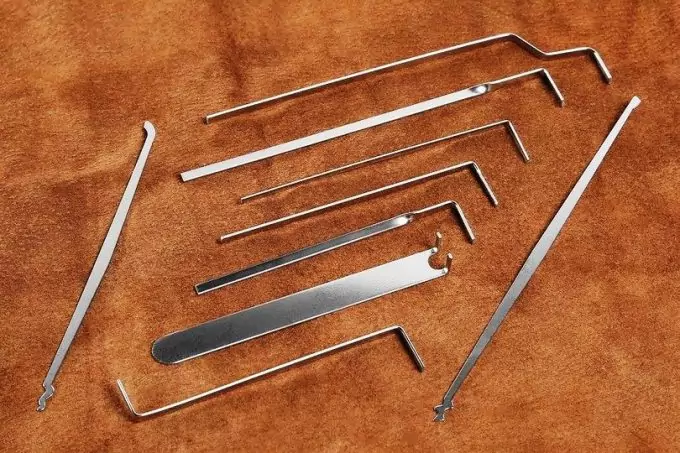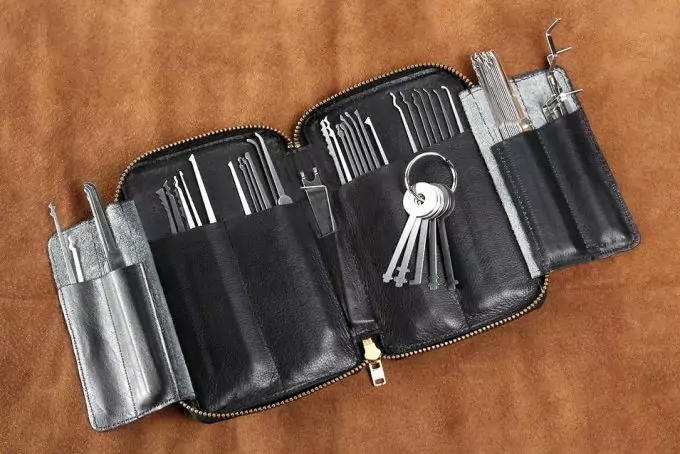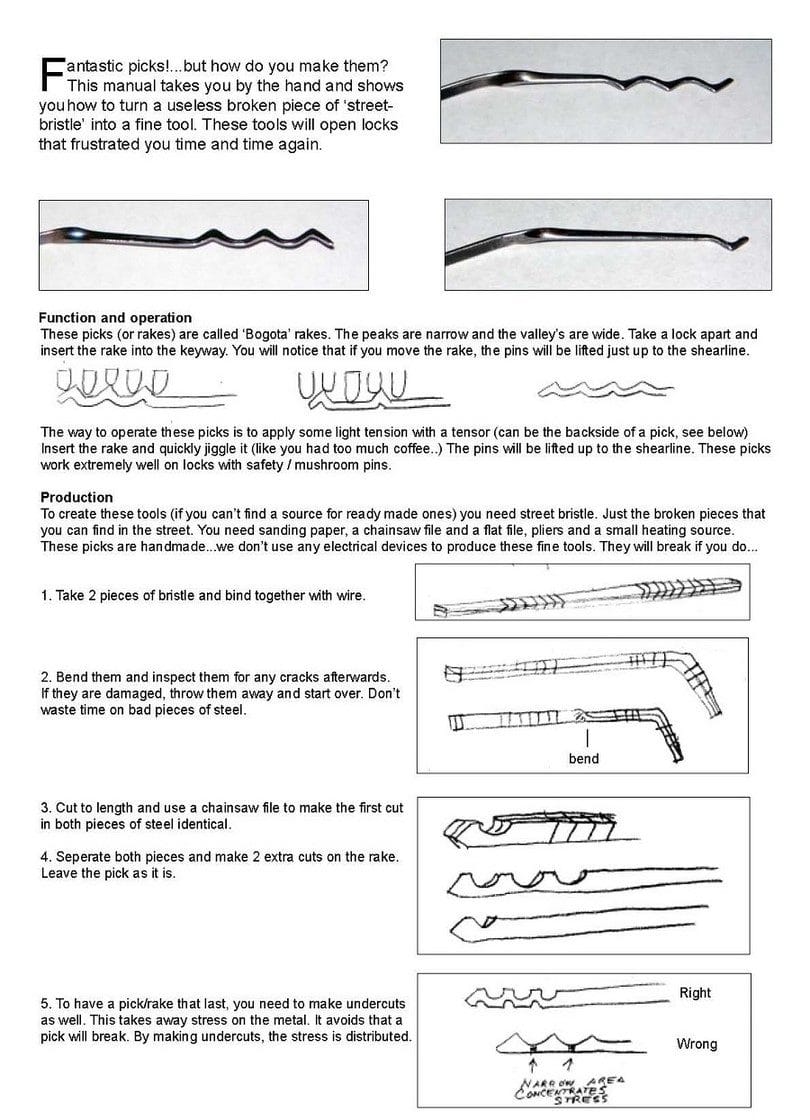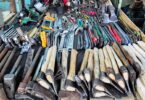How many times have you lost a particular key or set of keys and struggled endlessly to open a specific lock? Have you ever broken or replaced a lock only to find your misplaced keys a few days or weeks later?
It’s times like these that the best lock pick set will come in handy! Therefore, it is essential to choose the right tools, but it’s also advisable that you understand different mechanisms.
Along with a wide selection of tools, there are resources that document precise instructions and guidelines. You can even sign up for professional training if you want to consider a career as a locksmith.
Different Pick Choices
The picks available today vary as widely as the locking systems. There are different sizes, shapes, and materials to choose from, which can seem confusing to those just starting. When selecting a set for your personal use, it’s important to choose one that includes several tools.
Diamond picks have a flat part at the bottom and a ramp-like tip. The sizes of the tips vary and the angle of the head. These are usually used for wafers, pin-tumbler locks, and padlocks.
Single ball varieties are round and often used for single-sided wafer locks.
Double ball picks look like a snowman. The ball closest to the tip is usually smaller than the second one, which makes it ideal for bi-direction wafer locks.

Hooks have an upward bent tip which is also rounded. They are used on pin-tumblers and are popular among professionals.
Rake picks are used in a back and forth motion. They are divided into several groups and are usually wavy in shape.
The Crake is used as a short hook.
The S rake is excellent for pin-tumblers and has the most pronounced shape.
The L rake is also known as a total rake.
The W rake typically has a blunt tip with one high end and one low end.
If you force a key, it could break and remain stuck inside. Therefore, you will need to remove the broken key before proceeding. This is where you need key extractors.
Various Picking Techniques
The technique will depend on the type of lock. Not all tools and techniques work in every situation.
Pin tumblers, for example, will require a tension wrench to apply added tension to the cylinder. You will need to push each pin until they line up just right. As you manipulate each pin, the cylinder will turn slightly, which will hold each of them in place as you continue to work.
After lining up the pins, you can apply tension to open the lock. You can also use a raking technique before applying pressure on each pin. This can help push at least some of the pins up before you proceed. It can make the task easier and faster.
If the pin tumbler has specific, oddly-shaped pins, it may require more specialized tools.

Tubular versions are usually found on washing machines, vending machines, and similar appliances. In such cases, you will need a specialized tool with a tubular blade. Key cuts are made into the blade, which makes them effective.
Combination locks will require different techniques depending on their design. For example, you can open a cheap padlock by sliding a thin piece of metal between the shackle and body.
Padlock shims (thin pieces of metal) are inexpensive and easy to use.
Choosing the Right Set
The ideal set will include a variety of picks and tension wrenches; all housed neatly inside a convenient carrying case. There are various brands to choose from.
The best tools are those that are rustproof. Bear in mind that some sets are designed for use on US-made locks while others are best suited for European and Japanese mechanisms.
When shopping around for the perfect set, keep the following points in mind:
- Look for the narrowest picks you can find. Not all of the tools in your kit need to be narrow, but you should have a variety to choose from. The narrower the tool, the more space you will have to move the pick around inside.
- If you intend on becoming a professional locksmith, you should invest in more than one set. One should consist of standard tools, and the other should include narrow tools along with those designed for foreign mechanisms.
- Again, if you are a professional, then it is advisable to invest in quality tools. These will usually cost more initially, but they will more than pay for themselves in the end.
- For those who are just starting out, spending a small fortune on these tools might not be a wise investment. Cheaper tools are best for beginners since they will allow you to learn without worrying about breaking or damaging them in any way.
Common Mistakes to Avoid
When learning the trade, there are several words of warning. As with any skill, there are several common mistakes that you should be aware of.
- One of the most common errors in the use of too much tension. You need some pressure to turn the pick and open the lock, but you can cause severe damage if there is too much strain.
- On the other hand, another common mistake is using too little pressure. This won’t cause any harm, but it will be futile in your efforts.
- Another novice problem is using the wrong tool or manipulating the bad tension point.

- When applying pressure to the pins, you need to push them up. However, contrary to some misconceptions, it’s not advisable to press them up as far as they can go.
- If you apply too much pressure and force, even with just one pin too far up, you might cause more damage, and this will make your job that much more difficult.
- Many might argue that the biggest mistake is that of impatience. But, whether you are learning or highly experienced, there is no substitute for patience. Take your time to do the job right rather than trying to rush through the process.
Training, tools and DIY
Several resources will help you learn more about the different tools, skills, and techniques. However, no amount of theory can compare to the experience you get from a hands-on approach. This is why so many aspiring professionals learn these skills from trained and skilled experts.
Also, see Best Keychain Multi-Tool: Tips & Reviews for Best Products.
Another great way of learning and practicing is by purchasing practice locks. Practice locks are available online and from various retailers like picking kits.
A good example of such a product is the famous transparent padlock. As you work on the mechanism, you will see exactly what’s happening inside. Then, after just a few tests, you will begin to get a “feel” for it, which is the most valuable skill of all.
Other tools include electric, lock pick guns, and specialized tools designed to open car doors.
If you are looking for a specific pick or wish to take on a different hobby, you can make your picks using spring steel. You will also need the right kind of equipment to file and shape your tools so that they will fit.
Remember to take your time and start learning how to work on the primary systems before trying anything more complex.
Final Thoughts
Learning how to pick locks and investing in the necessary tools can come in handy even if you don’t plan to make a living from mastering this skill. They can come in particularly handy when you find yourself locked out of a particular room or if you need to access a closed object like a safe or file cabinet.
When shopping for your first set of tools, it’s best to keep your budget in mind while comparing products and reading reviews.
Every product has its fair share of positive and negative feedback, which is exactly why it’s essential to read through all the comments. While you do, please take note of the user’s level of experience and their opinion. Start with cheaper products if you are new to the trade. That way, if they do break or get damaged, you won’t be as concerned about the money.
Check out our earlier tips on how to pick a locked door for more insight. It’s a must-read!






I avoid pre-made kits because I know from my experience that they can contain many useless tools and, more importantly, they’re just not made with me in mind. I’d start with high quality hooks, I experimented with several brands, and I prefer Peterson.
Thank you, Nidal, for sharing your opinion with us.
Pre-made lock pick kits may not have everything you need to successfully pick locks. So, you can assemble one of your own that contains the most essential lock picking tools.
Is it more important to pick a set with more tensions or more tools attached? I am a beginner when it comes to lock picks, but I would like to learn the skill in order to access stuff I accidentally locked myself out of (happens often, unfortunately!)
The information provided in the article will make you a pro in the shortest time possible.
Most people view lock picking negatively since it is mainly associated with burglary. However, this is the one skill that can get you into your own hidden storage when you lose your keys or forget the combination.
I bought a set once just for practice. Several picks had duplicates which made sense because as a first timer, I was bound to bend the tools. What tested my skills are the ones for smaller locks like a portable travel lock. I just kept twisting and turning and using other tools but none of them worked. Needless to say, I’m still stuck with master locks and general locks but, yeah, good practice.
Picking locks get easy with experience; all you need are appropriate techniques.
You can pretty much open a master lock by yelling at it. Watch a few youtube videos, you’ll have one open in no time.
There’s more to a lock pick gun than insert, snap, lock open. A lock pick gun works on the same principle as bump keys, they work by using a needle, which flicks at the pins. In the long term, if you use them in the same lock over and over again it will damage the pins, but so will picking the same lock over and over with any other lock picking tool. In the end it’s how you said, learn these skills from a trained and skilled expert, because the result is definitely about every persons skill level.
Lock picking comes naturally to some individuals with just a few tools, but others have to learn from the best. There is no need of trying, just get the appropriate tools, and allow the expert to train you. We have provided you with this information to ensure that you don’t use the wrong tools.
I think lock pick sets are one of the more overlooked essential tools a homeowner can purchase. Even if you lose a key or forget the combination, having the best lock pick kits around can help you get through those doors. Thank you for recommend these sets.
I agree – having a set and knowing how to use it provides a lot of options.